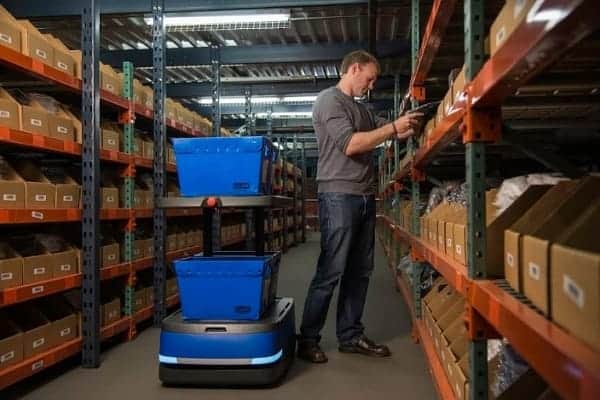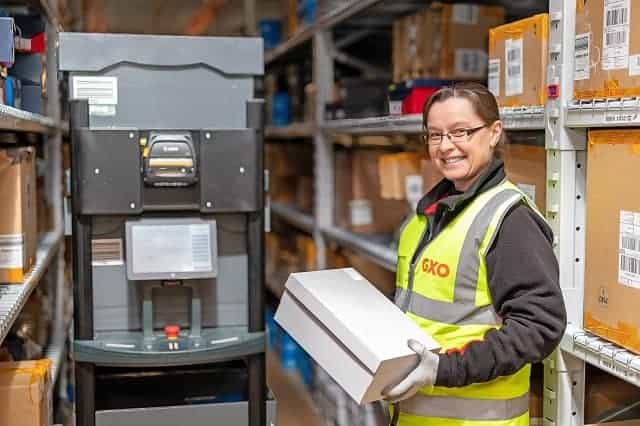Order picking is the most resource-intensive operation of a warehouse or fulfillment center. More than 55% of the operating cost for a warehouse is related to order picking, and fulfillment centers, the number stands at 50%. It is the process that can bring in the most cost savings with an effective, streamlined and efficient order picking system. One of the most important components of your order picking system is the warehouse order picking cart.

Order picking carts are used to move inventory from the warehouse shelves to sorting or packing stations. They make it easier for warehouse associates to carry multiple items at a time or to carry large, unwieldy items. When it is possible to carry multiple items on a trip, it drastically reduces the distance traveled by associates on foot. It also helps to reduce physical fatigue and improves efficiency dramatically.
Though order picking carts tend to reduce cost and improve efficiency, the wrong order picking carts can also cost your warehouse money. There are several considerations to weigh when selecting order picking carts for your warehouse operation, from picking cart features to the inventory and systems employed in your warehouse.
1. Suitability with inventory
Warehouses carry different types of inventory on their shelves. A company might have large individual orders from customers by pallets, so it makes sense for them to store the inventory on pallets. Picking carts aren’t ideal for this scenario, as they’re not designed for transporting pallets. A forklift or pallet truck makes more sense in such a warehouse.
In a similar fashion, the type of inventory carried by the warehouse determines what type of order picking cart to use. The inventory could be large, small, heavy, light or dense, and the order picking cart needs to be suitable for moving these items. There is a wide variety of carts to choose from, including security carts, stock carts, service carts, utility carts, smart carts, platform carts, pack mule (electric towable carts), forklifts, pallet trucks, etc.
2. Order picking system compatibility
In most cases, order picking carts are used to support the single order picking system that requires a lot of time and physical effort from warehouse associates. Still, there are multiple order picking systems that handle multiple products and orders at the same time. Some of the order picking systems commonly employed by warehouses today are batch picking, multi-batch order picking, cluster picking, wave picking, zone picking, pick-to-light, voice picking, mobile-scanner based picking, etc.
Some order picking carts are designed to suit specific types of order picking methods. It is best to select one or more order picking systems for your warehouse, optimized according to the inventory, order pool and traffic, and then select the order picking carts that support your order picking methods and accommodate your needs.
3. Sturdiness and longevity
Order picking carts cost anywhere between a couple of hundred dollars to thousands of dollars per cart. It stands to reason that the carts endure significant wear and tear over the course of their usable life. Selecting the right warehouse order picking cart comes down to the materials, use, fit and finish of the carts.
In a warehouse that experiences a very high level of humidity, warehouse order picking carts made completely of non-corrosion-resistant metals are not ideal. A predominantly plastic build would be much more suitable in such conditions. However, metal carts are a good choice for a warehouse that uses carts to transport heavy items that plastic carts can’t handle. Again, the most suitable order picking cart depends on your operating requirements.
4. Collaborative picking capabilities
Collaborative mobile robots are rising to prominence in the warehouse industry due to their flexibility and ability to improve warehouse productivity. They travel autonomously throughout the warehouse, so warehouse associates don’t have to push or pull the cart. As a result, warehouse associates experience less physical strain and fatigue, which can hinder productivity, compared to operating manual picking carts.
Collaborative robots like Chuck by 6 River Systems leverage artificial intelligence and machine learning to prioritize work in real-time based on the current conditions on the warehouse floor. Chuck guides associates to each pick location and through each picking task, enhancing the work of your associates to improve accuracy in ways that manual picking carts can’t and makes use of the advanced guidance technology to traverse through the warehouse floor without requiring any modifications to your existing warehouse infrastructure. Visit this post to learn about our simple, three-step process to determine if Chuck is right for your operation.
Download our white paper, The Business Case for Collaborative Mobile Robotics, to learn more about how collaborative robots can help you increase labor productivity and operational flexibility.


